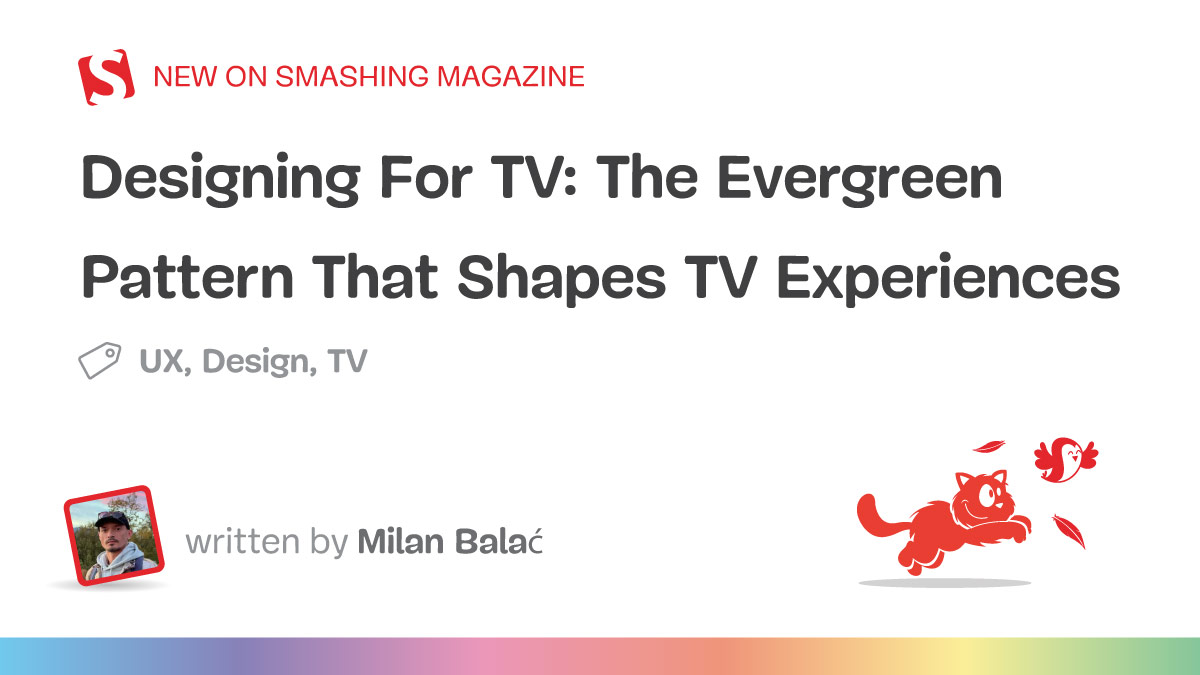
"Television sets have been the staple of our living rooms for decades. We watch, we interact, and we control, but how often do we design for them? TV design flew under my "radar" for years, until one day I found myself in the deep, designing TV-specific user interfaces. Now, after gathering quite a bit of experience in the area, I would like to share my knowledge on this rather rare topic."
"Firstly, we have the so-called " 10-foot experience," referring to the fact that interaction and consumption on TV happens from a distance of roughly three or more meters. This is significantly different than interacting with a phone or a computer and implies having some specific approaches in the TV user interface design. For example, we'll need to make text and user interface (UI) elements larger on TV to account for the bigger distance to the screen."
TV interface design is a distinct field shaped by decades of evolution and strong legacy constraints. Television remains a central living-room device, requiring design attention specific to its context. Design practice separates into historical and practical study of fundamentals, principles, and patterns. Two key paradigms dictate TV interface decisions: the 10-foot experience and contrast-driven display choices. The 10-foot experience means interaction occurs from roughly three or more meters and necessitates larger text and UI elements. Contrast standards favor dark interfaces to prevent blinding viewers in dim environments. These constraints require tailored UX patterns different from phone or computer design.
Read at Smashing Magazine
Unable to calculate read time
Collection
[
|
...
]